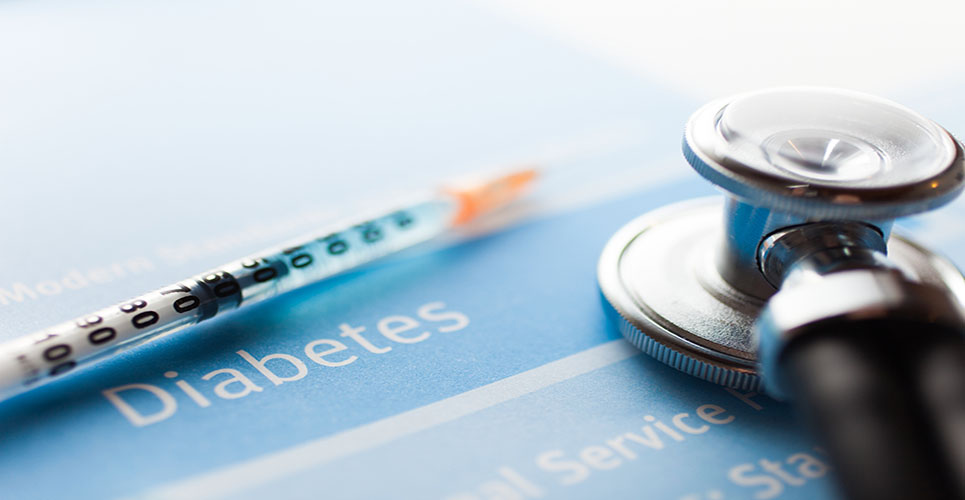IDegLira demonstrates superior glycaemic control and weight loss
On December 3rd, 2013, new phase 3 data from the investigational therapy IDegLira (insulin degludec [Tresiba®]/liraglutide injection [Victoza®]) were presented at the World Diabetes Congress of the International Diabetes Federation.
The DUAL™ II trial shows that in comparison with insulin degludec, IDegLira achieved superior control of blood sugar levels (HbA1c). Improved fasting and postprandial plasma glucose levels were seen with IDegLira throughout the day and across meals, while providing significant weight loss for adults with type 2 diabetes uncontrolled on basal insulin. The rate of hypoglycaemia was low in both treatment groups, even with a significant difference in HbA1c reduction with IDegLira. This trial was designed to evaluate the contribution of the liraglutide component of IDegLira on glycaemic control.(1)
IDegLira is the first-ever once-daily, single administration combination of a long-acting basal insulin and glucagon-like peptide 1 (GLP-1) analogue being developed by Novo Nordisk.
“Many patients are concerned about insulin-based therapies due to a fear of weight gain and hypoglycaemia. In the DUAL™ II trial, IDegLira demonstrated spectacular HbA1c reductions with a weight loss of 2.7 kg for patients uncontrolled on basal insulin. To achieve this, with a low rate of hypoglycaemia and few gastrointestinal adverse effects, is fantastic for this patient population,” said Professor John Buse, University of North Carolina School of Medicine, Chapel Hill, NC, USA.
The DUAL™ II trial evaluated IDegLira in people with type 2 diabetes who were uncontrolled on basal insulin at 26 weeks.(1)
- At 26 weeks, once-daily IDegLira provided a mean HbA1C reduction of 1.90% compared with a reduction of 0.89% for people taking insulin degludec (estimated treatment difference: −1.05% [95% confidence interval (CI) −1.25 to −0.84], p<0.0001) at equivalent insulin doses. This resulted in people on IDegLira reaching an HbA1c of 6.9% at the end of the trial from a baseline of 8.7%.
- People with type 2 diabetes on IDegLira experienced a significant mean weight loss of 2.7 kg from baseline compared with no weight change with insulin degludec (estimated treatment difference: −2.51 kg [95% CI −3.21 to −1.82], p<0.0001).
- Hypoglycaemia incidence was comparable between the two groups (24% for IDegLira vs 25% for insulin degludec), demonstrating that with IDegLira, superior glycaemic control was achieved in comparison with insulin degludec at equivalent insulin doses, with no higher risk of hypoglycaemia. The rates of confirmed hypoglycaemic events per person were 1.5 for IDegLira vs 2.6 for insulin degludec (p=0.13).
- IDegLira provides glycaemic control by reducing both fasting plasma glucose (FPG) and postprandial plasma glucose (PPG). Nine-point glucose profiles revealed significantly lower mean plasma glucose with IDegLira compared with insulin degludec (7.5 vs 8.7mmol/L, respectively; estimated treatment difference: −1.07 mmol/L [95% CI −1.44 to −0.70], p<0.0001).
IDegLira was well tolerated with a discontinuation rate of 1.0% at the end of treatment due to any adverse events in DUAL™ II.(2) None of the people taking IDegLira who had previously been on basal insulin discontinued due to nausea.2 Overall, gastrointestinal events were low and only marginally higher with IDegLira compared with insulin degludec (nausea 6.5% vs 3.5%; vomiting 3.5% vs 0.0%).(1)
About the DUAL™ clinical programme
DUAL™ (DUal Action of Liraglutide and Insulin Degludec in Type 2 Diabetes) consists of two phase 3a trials encompassing around 2,000 people with type 2 diabetes.
DUAL™ I (around 1,600 people) – a 26-week, randomised, open-label trial comparing the efficacy and safety of IDegLira, insulin degludec and liraglutide, in people with type 2 diabetes inadequately controlled with metformin with or without pioglitazone.
DUAL™ II (around 400 people) – a 26-week, randomised, double-blinded trial comparing IDegLira and insulin degludec in people with type 2 diabetes uncontrolled on basal insulin in combination with metformin ± sulphonylurea/glinides. Sulphonylureas and glinides were discontinued at randomisation. In this trial, the allowed maximum dose of insulin degludec in the treatment arms was 50 units to investigate the contribution of the liraglutide component of IDegLira on glycaemic control.
About IDegLira (insulin degludec/liraglutide)
IDegLira is a combination of insulin degludec (Tresiba®), a once-daily basal insulin analogue with an ultra-long duration of action, and liraglutide (Victoza®), the once-daily human GLP-1 analogue for the treatment of type 2 diabetes, which is being developed for the treatment of type 2 diabetes. For people with type 2 diabetes uncontrolled on basal insulin therapy, once-daily IDegLira has demonstrated a significant reduction in HbA1C of 1.9% with a mean weight loss of 2.7 kg with a low rate of hypoglycaemia comparable to that of insulin degludec. IDegLira was administered once daily independently of meals and has shown consistent results in both insulin-naïve people as well people with type 2 diabetes that are uncontrolled on basal insulin.
IDegLira is being investigated in a phase 3 clinical trial programme, DUAL™. Novo Nordisk submitted the regulatory filing for IDegLira in the EU on 31 May 2013.
References
- Buse JB, et al. Liraglutide contributes significantly to glycaemic control achieved in IDegLira: a double-blind Phase 3 trial in type 2 diabetes. Oral presentation (OP – 0082) at the World Diabetes Congress for the International Diabetes Federation (IDF), 3 December 2013.
- Novo Nordisk Data on File.

